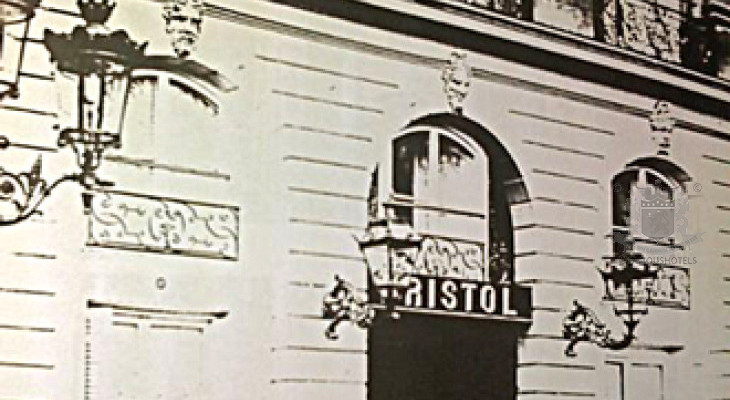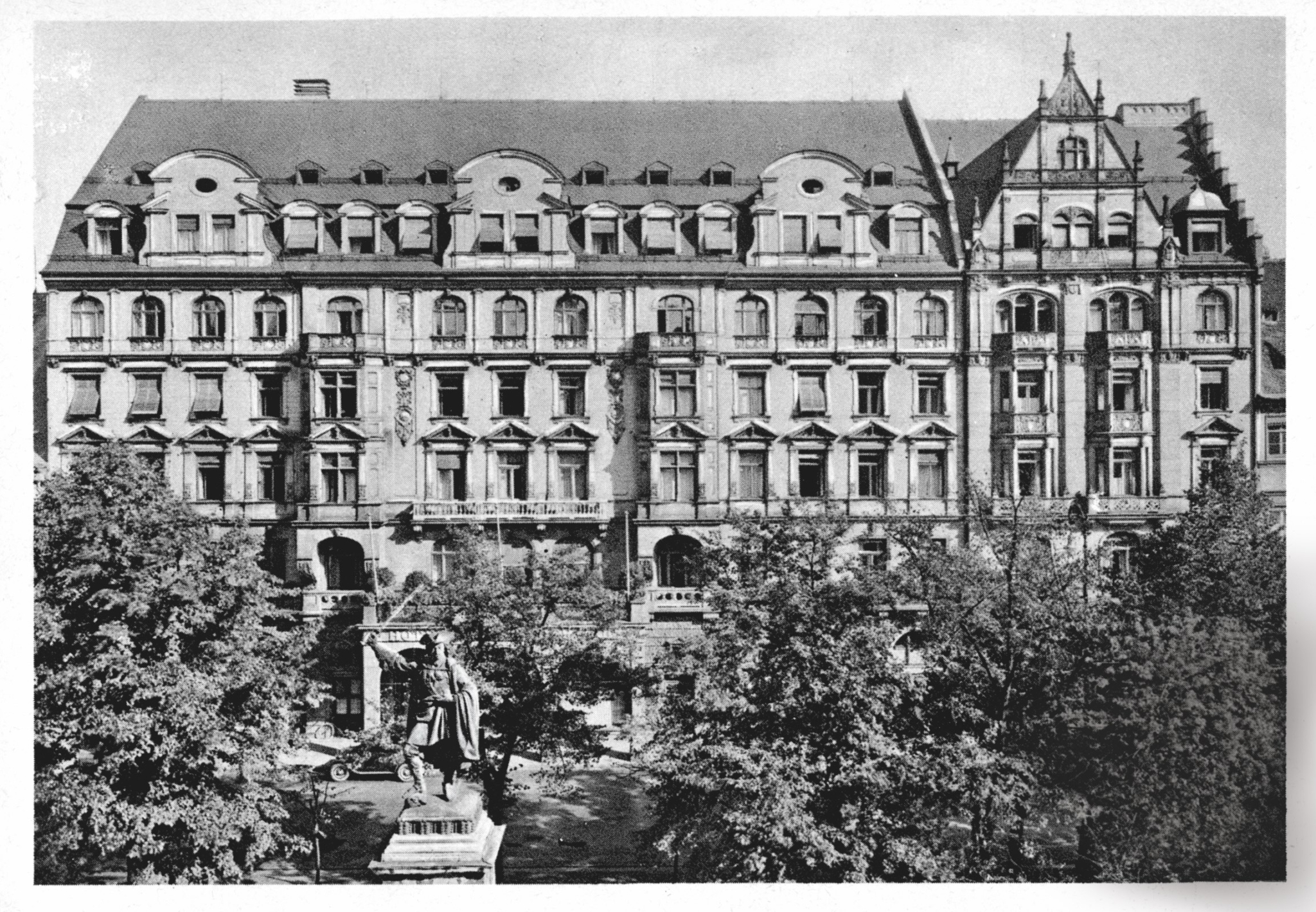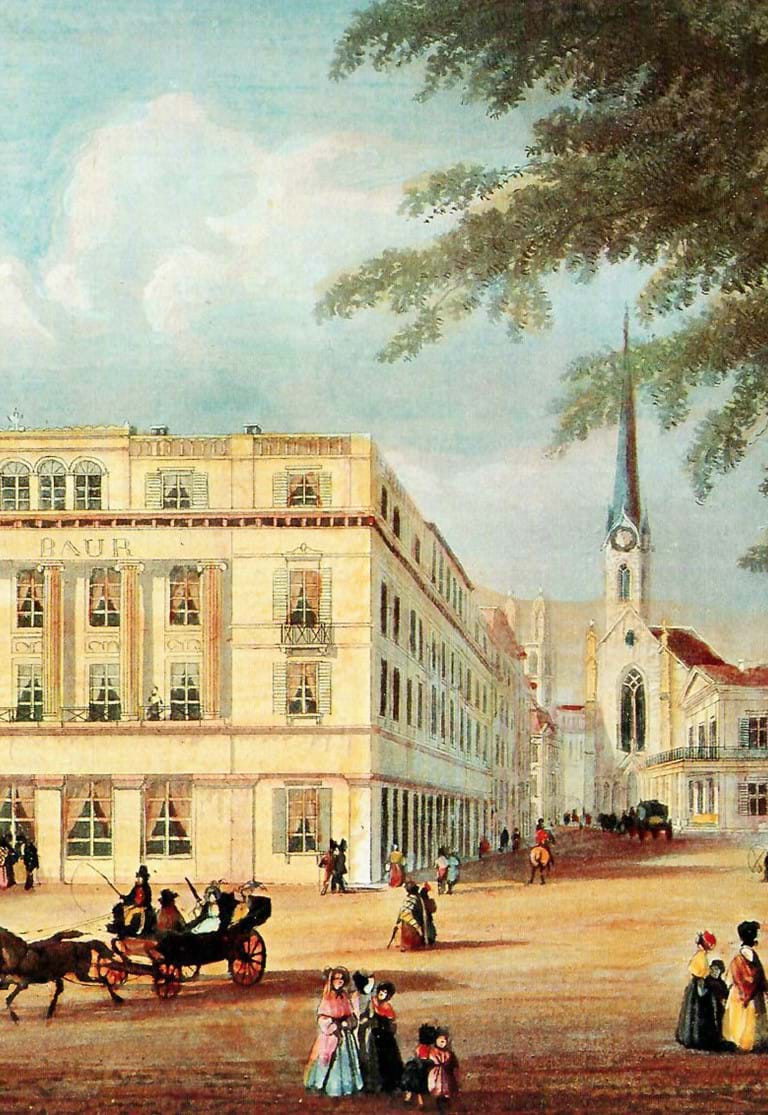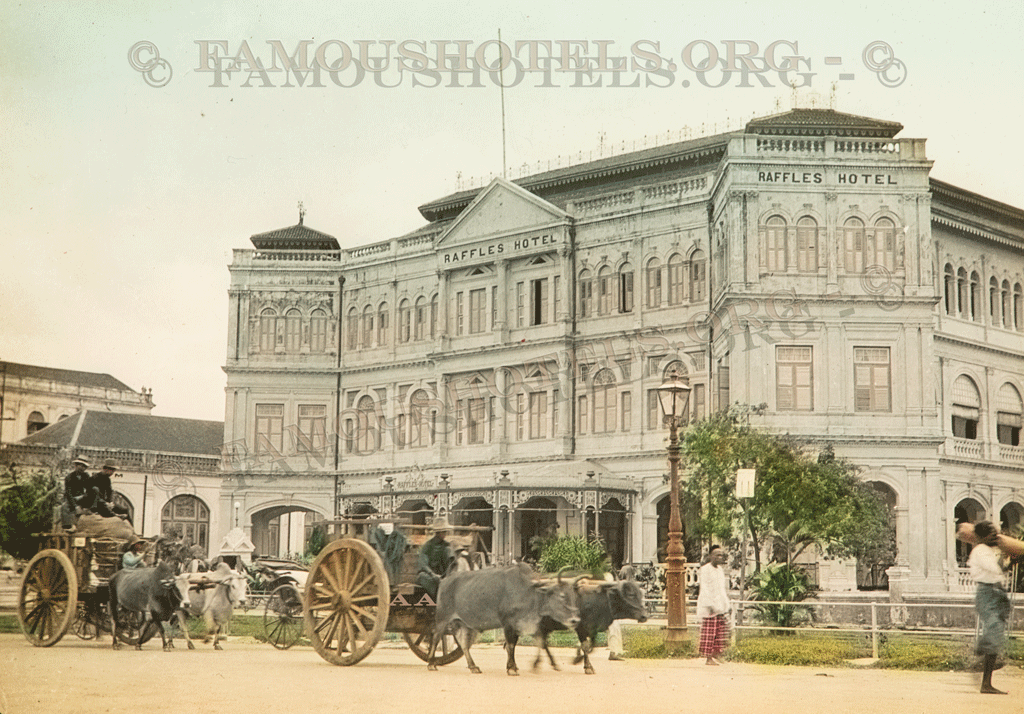Paris: The lost Bristol Hotel
( words)
This story: 1275 words, approx reading time 6,4 minutes; tags #bristol, #paris, #ritz, #dickens
'The lost Hotel Bristol - the source of a legend'
'Old established houses like the Hôtel Bristol and the Hôtel Liverpool in the rue de Castiglione offered their guests distinction but little else,' wrote Marie Louise Ritz in her book "César Ritz". The Hôtel Bristol she refers to was the first Bristol Hotel we know of (and which does not exist any longer). How well did César know the Bristol? Did the Prince of Wales, who stayed there on one occasion, talk to him, say, at the Savoy in London, which Ritz managed for a while? Did he mention the great location in place Vendôme?
We know that the Prince of Wales once said: 'Where Ritz goes, I go.' Did Ritz think the same? Where the Prince of Wales goes, I should open a hotel?
The Bristol stood in Paris, in 3 and 5 place Vendôme, approximately 100 metres from the site of today's Hôtel Ritz. It was composed of two hotels: N° 3 was originally called Hôtel Giraud, built in 1720, N° 5 was called Hôtel Durfort, built in 1718. As in various other capitals of Europe, two small hotels were combined into a larger one.
The building on lot No 3 was built in 1718 as a private mansion for John Law, the infamous banker. Law's note-issuing bank was a spectacular success - until it collapsed after a bank run in 1720, plunging France and Europe into a severe economic crisis, which had an important role in setting the stage for the French Revolution some 70 years later. Indeed, the experience of Law's banking schemes on France were so traumatic that, until recently, the term "banque" was largely eschewed by French banks in order to avoid stoking up memories of Law's unfortunate institution (the common substitute term was "credit", as in "Credit Lyonnais", "Credit Agricole", "Credit Foncier", etc.).
As usual, buildings survive personal crisis. After John Law was forced to flee the country (he did not see the completion of the house), 3 Place Vendôme is said to have become the home of Madame Sancy de Parabère, the official mistress of Regent Philippe II d'Orléans (after whom the U.S. city of New Orleans is named, while a rose is named after her!).
When did the Hotel Bristol come into being?
Charles Dickens mentions staying at the Bristol in his diary from 1844, and made it a location in his novel "Bleak House" in 1851:
... Through the same cold sunshine and the same sharp wind, my Lady and Sir Leicester, in their travelling chariot (my Lady’s woman and Sir Leicester’s man affectionate in the rumble), start for home. With a considerable amount of jingling and whip–cracking, and many plunging demonstrations on the part of two bare–backed horses and two centaurs with glazed hats, jack–boots, and flowing manes and tails, they rattle out of the yard of the Hotel Bristol in the Place Vendome and canter between the sun–and–shadow–chequered colonnade of the Rue de Rivoli and the garden of the ill–fated palace of a headless king and queen, off by the Place of Concord, and the Elysian Fields, and the Gate of the Star, out of Paris.
...
Bleak House - Chapter 12 (written 1851, first published in 1852)
The Guide Parisien par Adolphe Joanne Paris Hachette 1863, lists the Hôtels of Paris: "Place Vendôme, 5, Hôtel de Bristol".
In the "Dictionnaire Historique des Rues de Paris by Jacques Hillairet (Volume 2, page 612) we find the note that the Prince of Wales had slept there. He became King Edward VII. He had put his head on different pillows in the city at the Seine. The Edouard VII Hotel, which opened its doors in 1877 in L'Avenue de l'Opera, claimes the Royal guest for itself, too. The Ritz says, he was the second royal visitor to use the new hotel (after HRH the King of Sweden and Norway). We also learn that the King and Queen of Portugal and the King of Greece all have stayed at the Bristol in Place Vendôme N° 3 and 5.
At the archives of The Most Famous Hotels in the World the International Album Guide of 1893-94 (illustrated hotel Directory) lists the Hotel Bristol among the best of Paris. The Baedeker of 1907 still has it among the top addresses of Paris, still at 3 et 5 place Vendôme. With World War I, the Great War, the hotel ceased to exist. In fact its days were counted when, on 1 June 1898, César Ritz opened his new Hôtel Ritz, just a stone's throw away. Together with the culinary talents of minority partner Auguste Escoffier, Ritz made the hotel synonymous with opulence, service, and fine dining. The Bristol, in every respect, became history.
The name-giving riddle
It is a commonplace desire of all existing Bristol Hotels to proof that they derive their name from a certain Earl of Bristol. We do not know exactly when the house that became the Paris Bristol was converted into a hotel, nor is it confirmed if it ever saw an Earl of Bristol as a guest.
This Earl Bishop really existed; he was a renown traveller, traversing Europe and amassing a remarkable collection of art and antiquities, which he displayed at Ickworth, an astonishing Italianate structure placed in the East of England (while the city of Bristol is at the other end of England, so to say, in the West). The eccentric 4th Earl Bishop of Bristol was Frederick Augustus Hervey (1730-1803). He could afford to build Ickworth, not because of his position as a peer of the realm, but because he held the position of Bishop of Derry, the richest district in Ireland at that time.
However, would the hotel have been named after the Earl, it makes sense to believe that it would have followed the tradition of quoting the full title, such as the Prince of Wales, the Duke of Edinburgh, or, as it would be the case here: "The Earl of Bristol". Instead, all other Bristol Hotels which opened later and still operate today, sport the coat of arms of the city of Bristol, which, again, has nothing to do with the Earl of Bristol’s history. And it was commonplace to call hotels after English cities ("City of London", "Manchester", "Liverpool" - see above - in the rue de Castiglione, etc.)
In Rome, for example, the management of the Bernini Bristol, stretches the legend to the extend that they advertise that their hotel a) took its name in the "honour of the First Baronet of Bristol, the Protestant Bishop of Bristol, who lived in the 18th century" and b) its guestlist features Catherine the Great. Catherine died even before the First Baronet of Bristol, in 1796. The Bernini Bristol opened some 78 years later, in 1874!
Today Place Vendôme No. 3 and 5 are town houses, no longer hotels. They are owned by the Sultan of Brunei.
The only Parisian Hôtel Bristol today, in rue du Faubourd Saint Honoré, was built in 1924. Here, as in Rome, Vienna, etc., we are 100% safe to say that it was never visited by the late Earl of Bristol. However, the way the hotel describes its history is still fascinating. In 1880, Hippolyte James decided to buy a piece of land on the
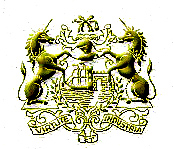
Fauberourg to build a hotel whiich he named Le Bristol in tribute to a great traveller, famous for his taste for comfort. The hotel opened its doors in April, 1925. The coat of arms that graces the hotel's letterheads, doors, carpets and of course its webpage speaks a clear language: it is the crest of the City of Bristol.
Andreas Augustin
Related stories:
Solving the riddle of the Bristol's hotel name, go to //famoushotels.org/article/466
César Ritz, the story, go to //famoushotels.org/article/480

